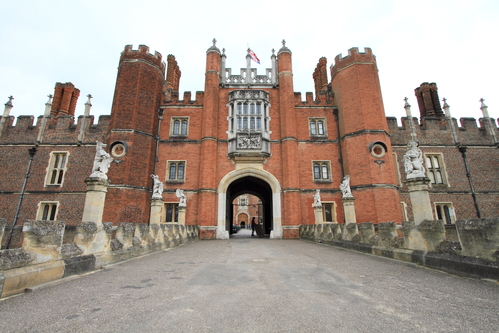
The news of Jane’s labor pains came a little sooner than anyone expected – she had “taken to her chamber” on September 16, which meant that no one expected the birth to occur until at least October 16 (queens began this period of seclusion about four-six weeks before their estimated due dates). Still, the news set off a massive reaction.
Henry was kept fully informed of her condition (she was at Hampton Court Palace, he was staying at nearby Esher). Once the labor pains were well established, he sent royal heralds into London to share the news. Ringing church bells spread the news around the country; countless masses were said and prayers offered for Jane’s safe delivery. England was truly united over this pregnancy, in a way they had not when Anne Boleyn was queen (don’t get me wrong, people wanted an heir, but Anne was too disliked for them to be excited about the prospect). Jane represented a new opportunity, new hope. She was given credit for facilitating wonderful changes in the country’s politics, including reinstatement of Spain as an ally and friend and the reconciliation between the King and his older daughter Mary. She was even thanked for inspiring good harvests (harvests had been terrible after the execution of Sir Thomas More). So this impending birth was an intense moment for the entire country. Unfortunately, they had to wait longer than anyone expected for the outcome…
***
If you like my posts, you’ll love my books! Jane the Quene and The Path to Somerset have finally been joined by The Boy King – now available through Amazon and Barnes & Noble and Kobo!

(What? You haven’t read Jane the Quene or Path to Somerset yet? Please do! And equally important – please leave a review – even just a star rating! It makes a huge difference in helping new readers find them and would mean the world to me!)
Poor Jane. I wonder if she had lived how differently things would have turned out.
It would have been night and day!